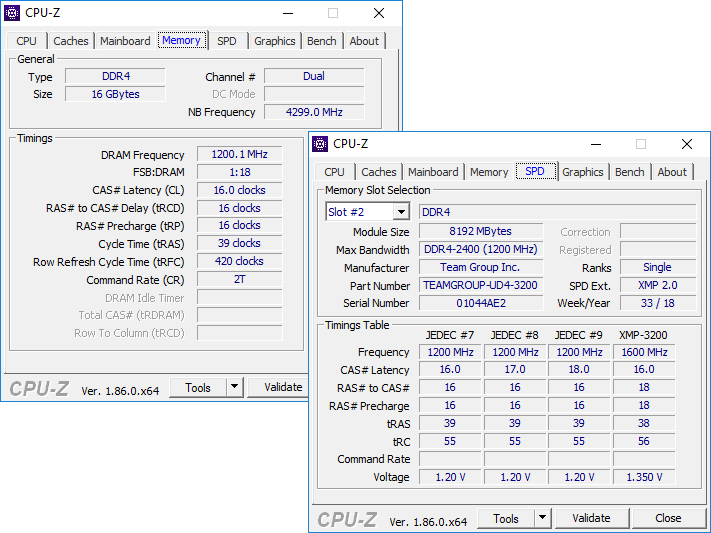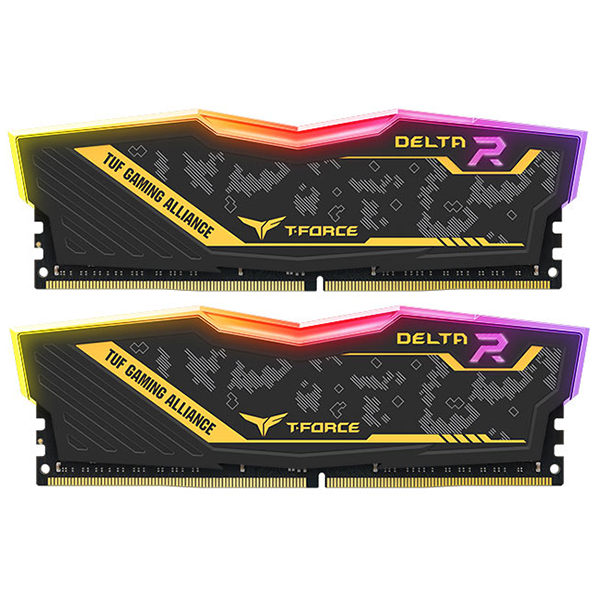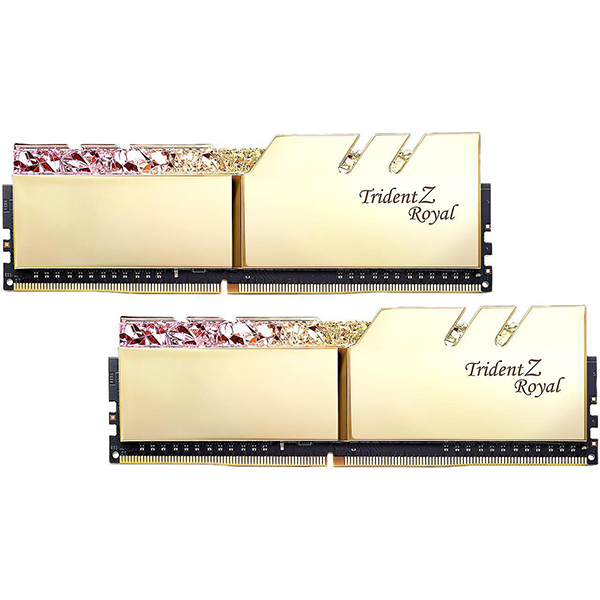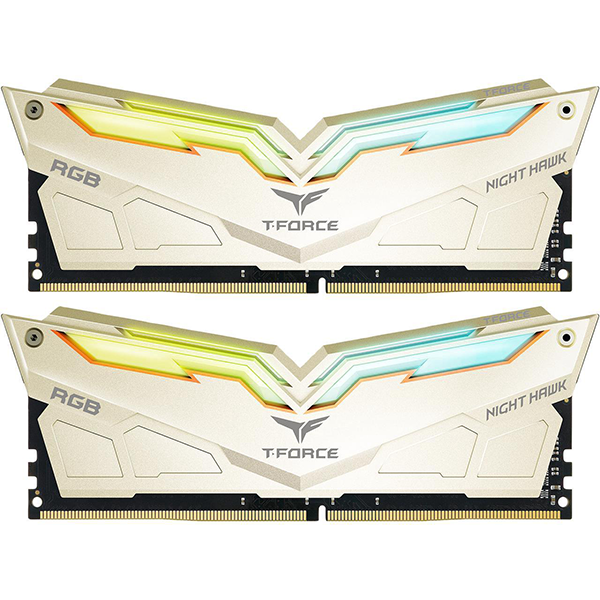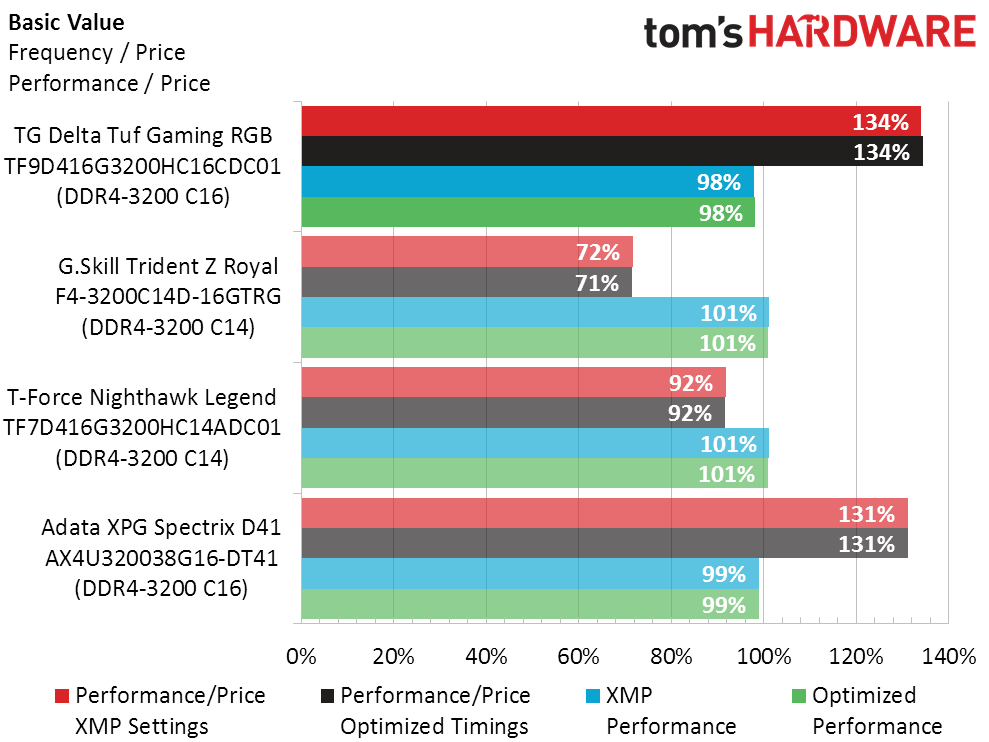Tom's Hardware Verdict
Team Group’s performance reliance upon Asus motherboards, along with the firm’s value pricing, makes for a perfect marketing alliance under the TUF Gaming banner. For those with compatible Asus boards, this is a good value.
Pros
- +
Excellent performance on Asus motherboards
- +
Fully-functional with T-Force Blitz RGB software
- +
Also controllable via Asus Aura RGB software
- +
Value pricing consistent with TUF Gaming Alliance branding
Cons
- -
Only performs well on Asus motherboards
- -
Blitz software defers to Aura when both are installed
- -
Limited overclocking capacity
Why you can trust Tom's Hardware
Asus' Tuf Gaming Alliance includes memory from several brands, but Teamgroup’s participation in this joint marketing venture makes particular sense given the fact that we recently detailed the memory's preference for Asus boards. Team Group’s P/N TF9D416G3200HC16CDC01 includes two 8GB, RGB-lit DIMMs. Oh, and in case you were wondering, TeamGroup also officially supports all three formats of its brand name, although we'll try to stick to Team Group from here on out.
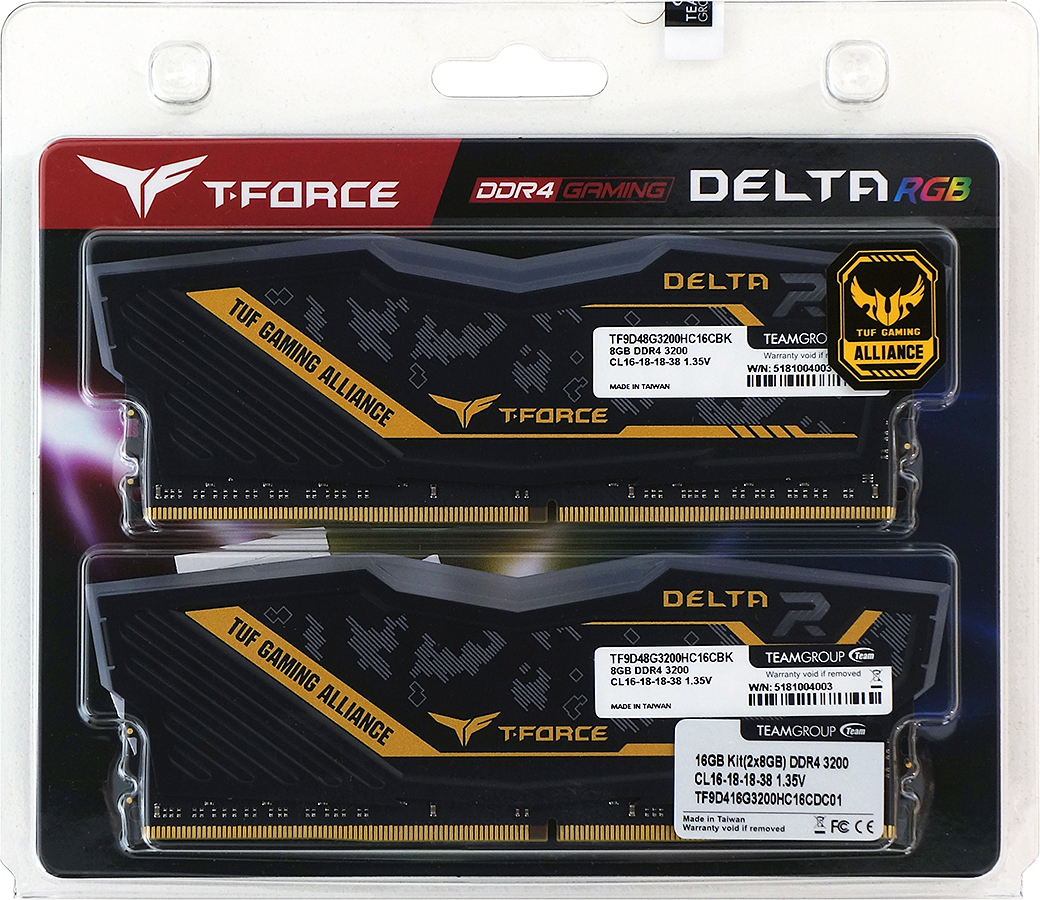
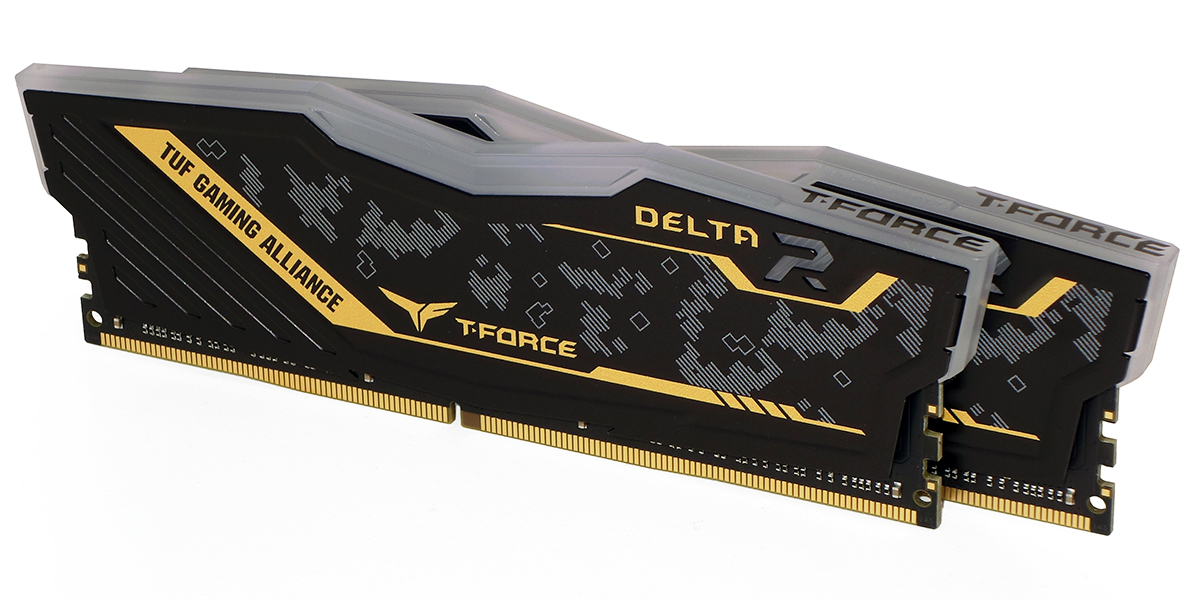
As the Tuf series focuses on gaming value, the Tuf Gaming kit uses moderate 16-18-18 timings to boast a DDR4-3200 data rate without breaking past mid-market pricing. Getting to the kit’s frequency and timings requires a processor and motherboard that supports overclocking, and automatic configuration requires a board with XMP-enabled firmware. Excluded processors are mainly low-end Intel models (including the “unlocked” Core i3-8350K). And speaking of Intel, you’ll need a Z or X-series chipset to go past DDR4-2666.
If for any reason you’re not able to set XMP or a related AMD-friendly variation, the modules will default to DDR4-2400 CAS 16. We’ve even spoken to some users of OEM Z-series boards that were unable to set XMP, so it’s best for those attempting to upgrade a factory-built PC to check their motherboard’s firmware before buying high data-rate memory.
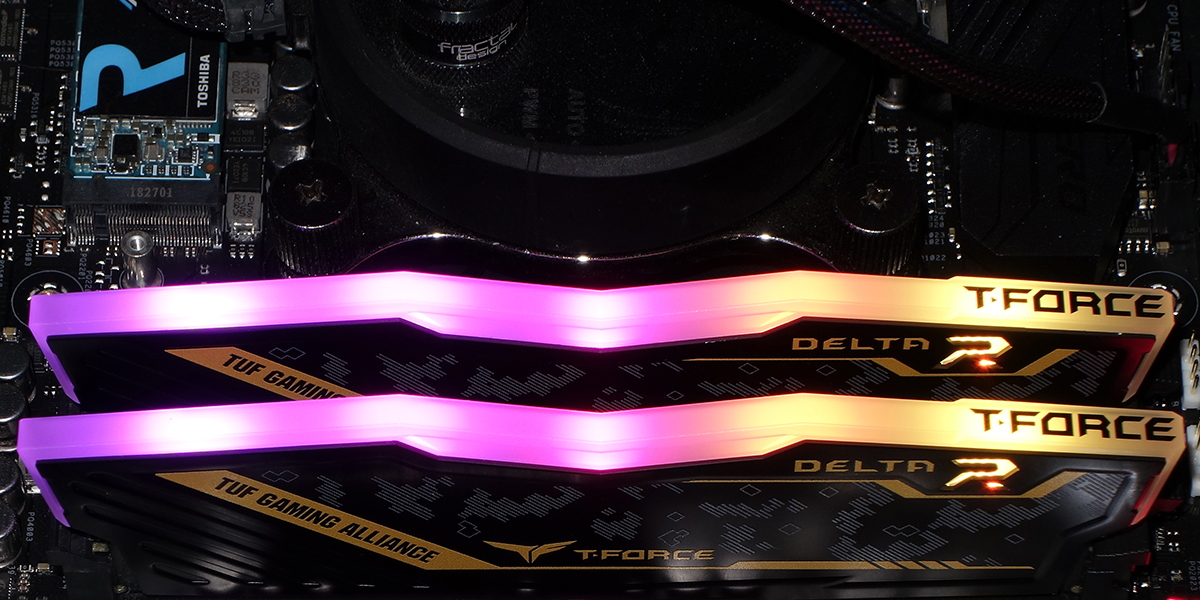
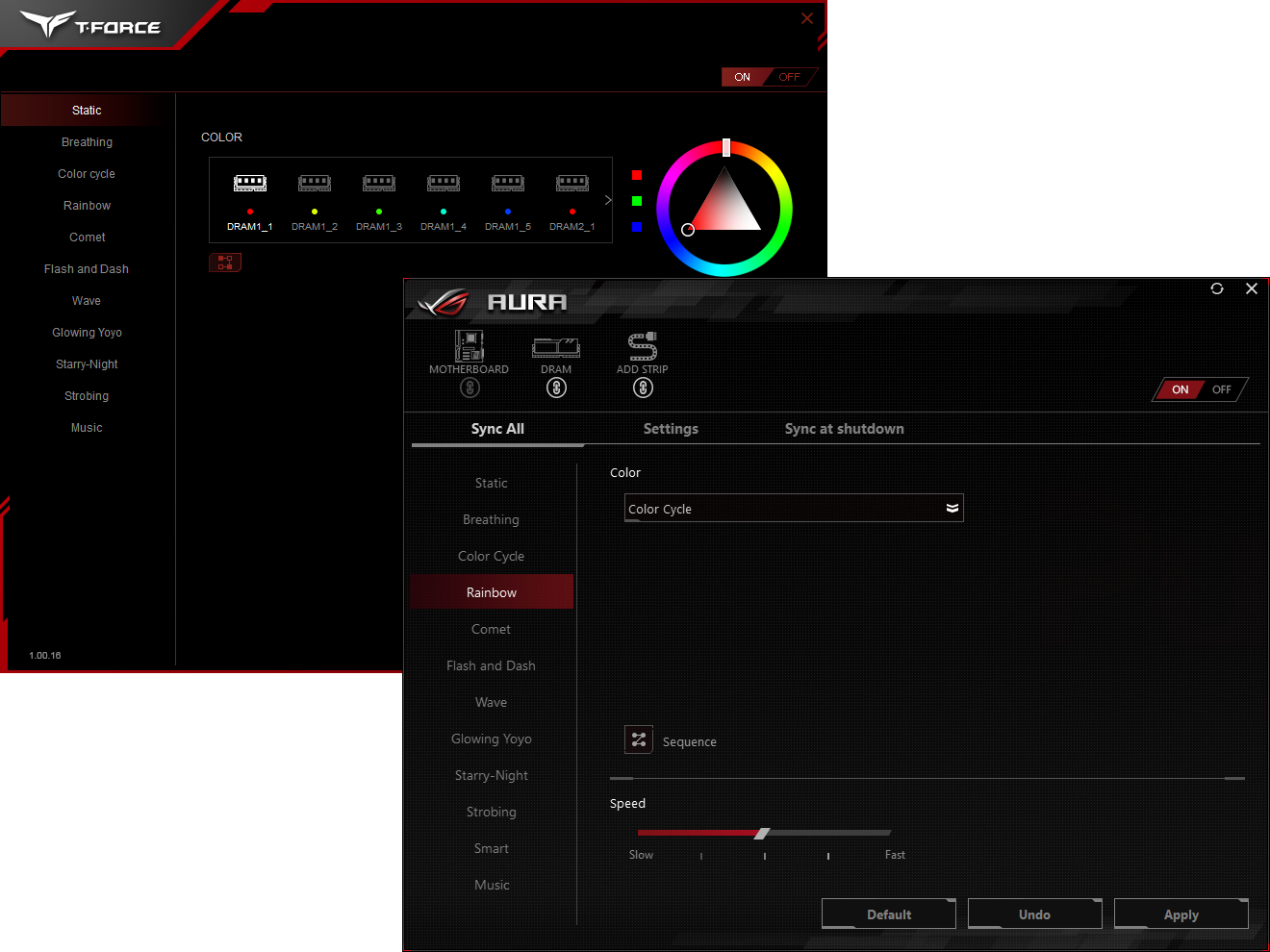
Delta Tuf Gaming RGB modules support both the T-Force Blitz and Asus Aura app to control lighting. But installing both simultaneously causes the Blitz shortcut to reroute to Aura. That’s a shame, since the Blitz app offers per-LED color settings that are unavailable in Aura.
Test and Comparison Hardware
We’re comparing Delta Tuf Gaming RGB DDR4-3200 C16 to pricier CAS 14 kits from G.Skill and Team Group, as well as a value-oriented Adata XPG Spectrix kit with similar timings to the Tuf Gaming RGB. The Maximus XI Hero from Asus hosts our Core i9-9900K at a fixed 4.80GHz frequency, and a GTX 1080 from MSI complements our 256GB OCZ RD400 SSD to minimize other bottlenecks.
Latency Tuning, Overclocking and Benchmarks
The two CAS 16 kits, Delta Tuf Gaming RGB and XPG Spectrix D41, were also the two kits that didn’t reach DDR4-4000 for our latency optimization tests. Both kits would run their stock DDR4-3200 timings at DDR4-3466 however, and we did see performance improve as a result.
| Lowest Stable Timings at 1.35V (Max) on ROG Maximus XI Hero (BIOS 0602) | ||||
| Row 1 - Cell 0 | DDR4-4000 | DDR4-3466 | DDR4-2933 | DDR4-2400 |
| TG Delta Tuf Gaming RGBTF9D416G3200HC16CDC01 | ✗ | 16-18-18-36 (2T) | 14-15-15-30 (1T) | 11-12-12-28 (1T) |
| G.Skill Trident Z RoyalF4-3200C14D-16GTRG(DDR4-3200 C14) | 19-19-19-38 (2T) | 15-15-15-30 (2T) | 13-13-13-28 (1T) | 10-10-10-28 (1T |
| T-Force Nighthawk LegendTF7D416G3200HC14ADC01(DDR4-3200 C14) | 19-19-19-38 (2T) | 15-15-15-30 (2T) | 13-13-13-28 (1T) | 11-11-11-28 (1T) |
| Adata XPG Spectrix D41AX4U320038G16-DT41(DDR4-3200 C16) | ✗ | 16-18-18-36 (2T) | 14-16-16-32 (1T) | 11-13-13-28 (1T) |
Team Group gave its Delta Tuf Gaming RGB the short end on overclocking, with the kit reaching a mere DDR4-3570 in our tests. Then again, most people use XMP defaults, anyway.
Get Tom's Hardware's best news and in-depth reviews, straight to your inbox.
Sandra shows both C16 kits performing almost identically, with the Team Group kit’s XMP settings leading the Adata kit in latency by a mere 6ns. The C14 kits perform better, but they also cost more.
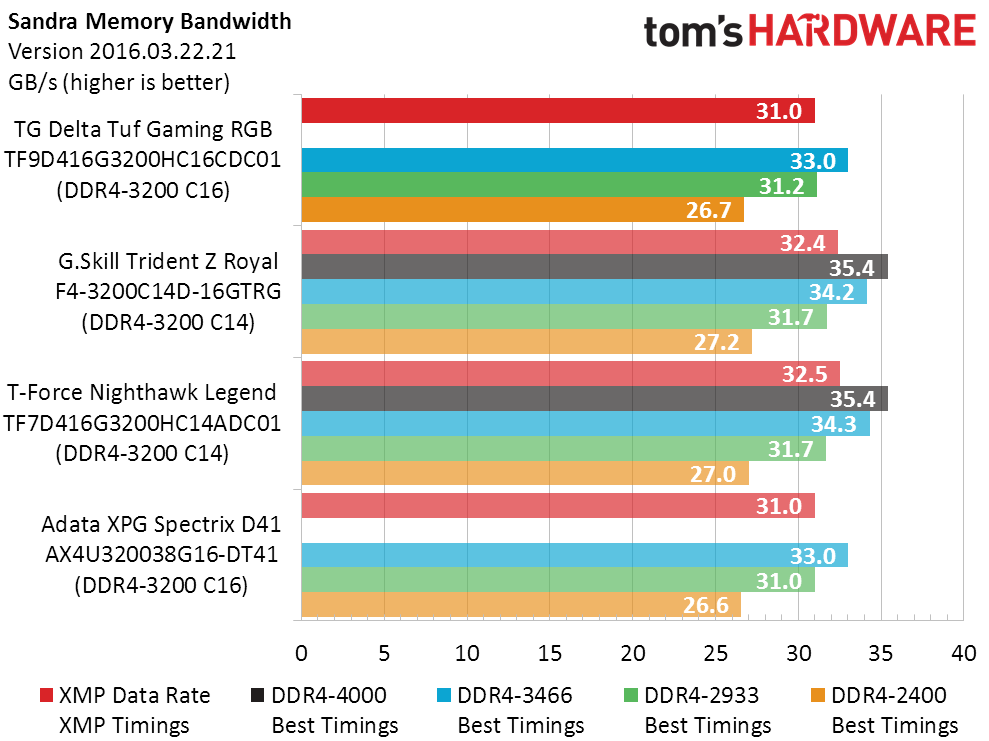
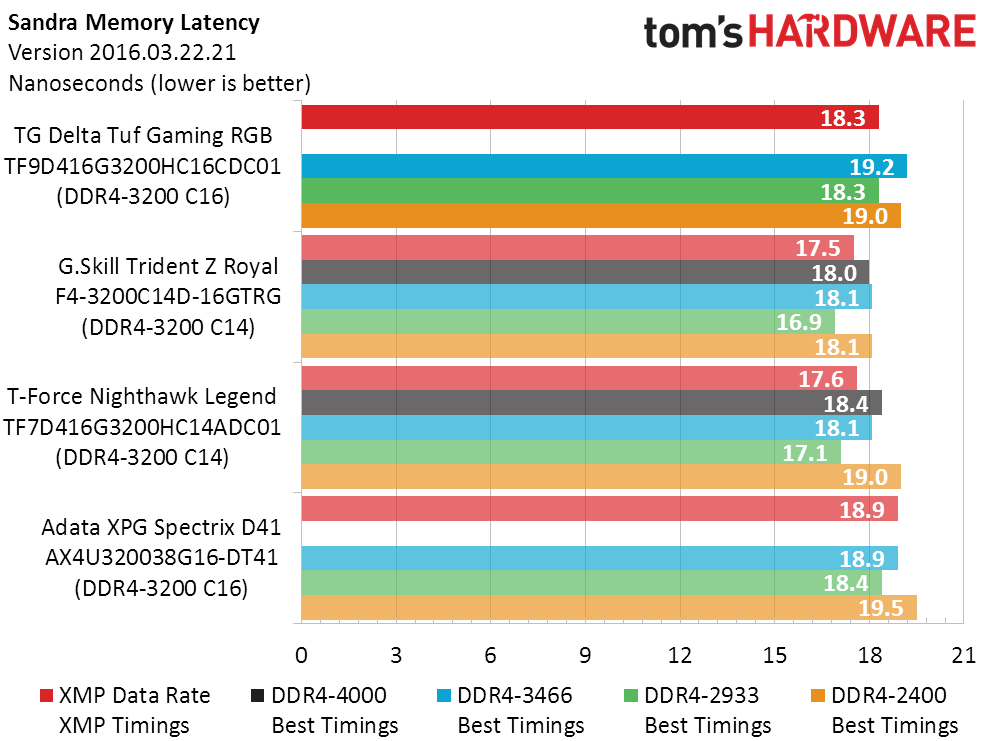
The Adata kit had marginal wins over the Delta Tuf Gaming in F1 2015 at both XMP and custom DDR4-3466 settings, but the pricier C14 kits proved why they cost extra.
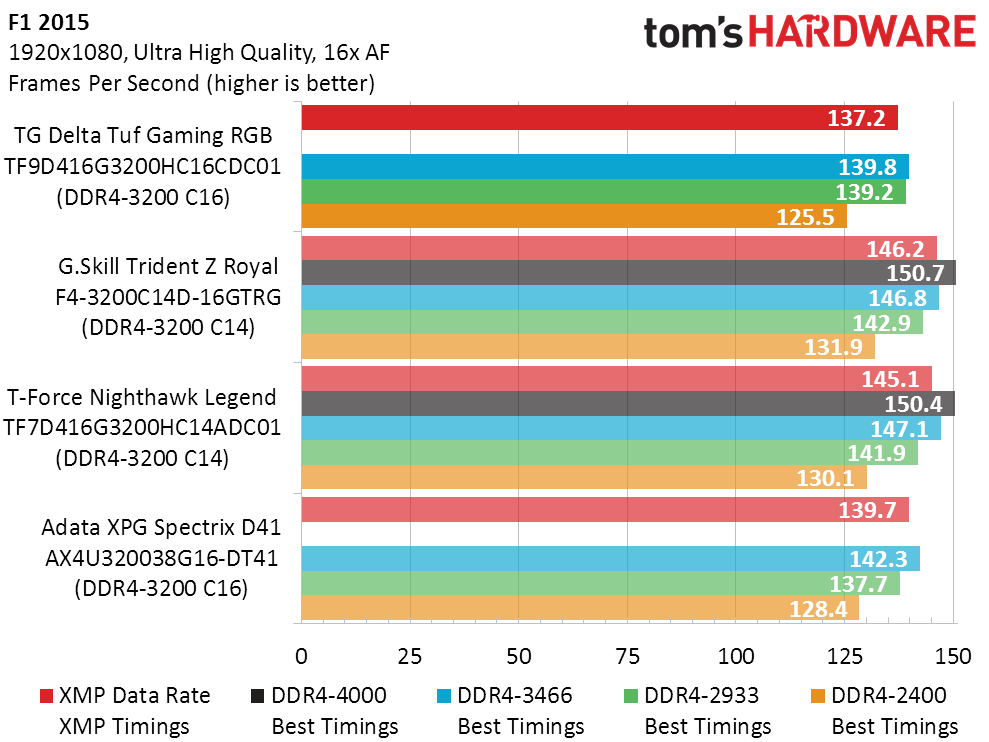
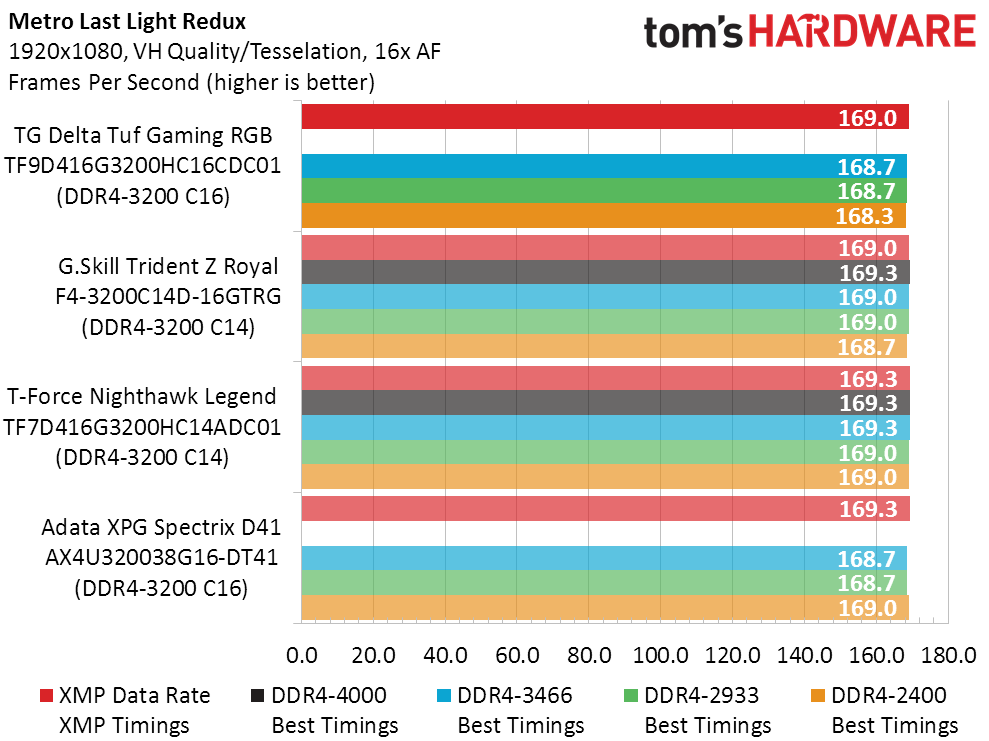

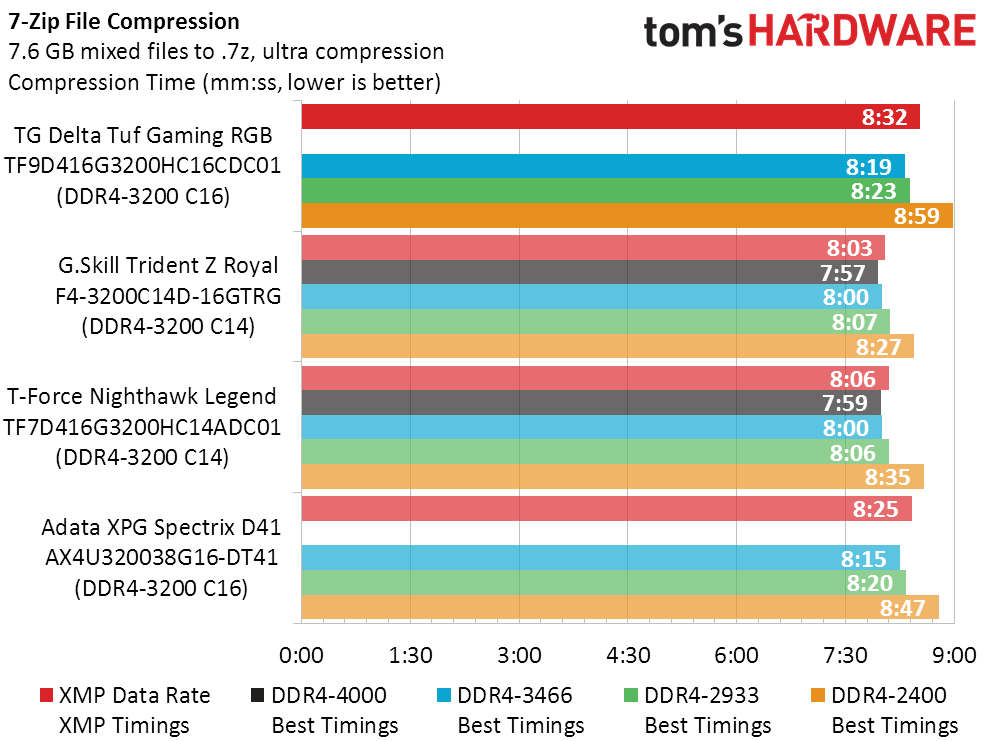
The Tuf Gaming RGB also finishes last in 7-Zip, but again the tiny losses should be considered against its low price.
Our Basic Value chart is called “basic” because it only compares performance to price. The Trident-Z Royal kit for example has aesthetic features that push its price beyond its performance segment. And while the Nighthawk Legend hits its segment perfectly, the price difference for lower-latency DDR4-3200 is still larger than its overall performance advantage. When it comes to value, the Delta Tuf Gaming RGB Wins.
But Why Is It “Asus Only”?
After being confused by Team Group’s DDR4 performance disadvantage throughout last year’s evaluations, we finally figured out that it was our change in motherboard vendor that caused the issue. Further tests showed that only Asus boards are optimized for Team Group memory, and today’s Asus TUF Gaming Alliance edition modules follow that same trend.
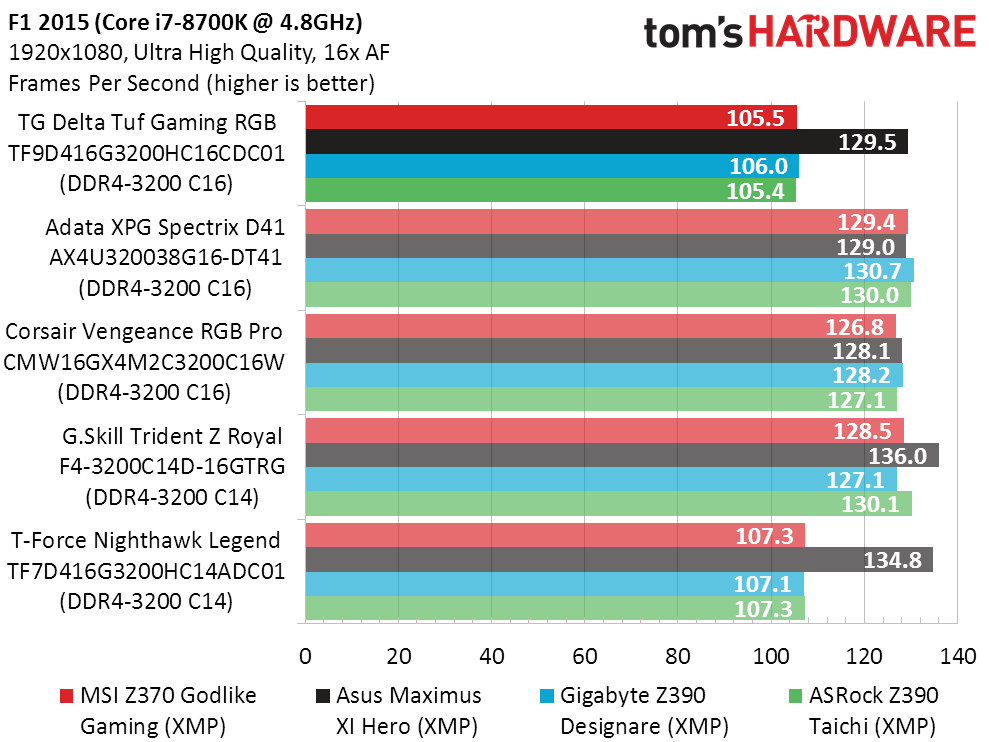
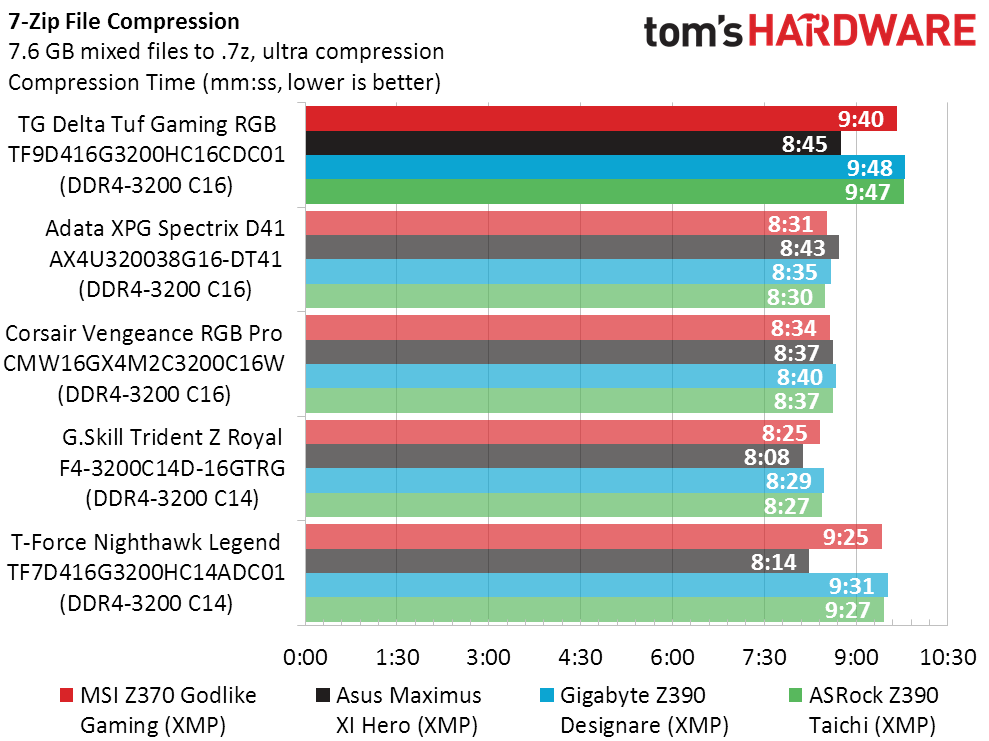
We added a set of Corsair DDR4-3200 C16 to further illustrate that performance problems on MSI, Gigabyte, and ASRock boards are primarily a Team Group issue. Of all the other brands of memory that aren’t shown in the above charts (including Crucial, Kingston, and Patriot), the only memory that had a similar deficiency on non-Asus boards was Gigabyte’s Aorus kit.
Team Group's Delta Tuf Gaming RGB provides Asus motherboard owners a solid value in lighted DDR4-3200. Those with other motherboard brands need not apply--or at least shouldn't expect the same level of performance.
MORE: Best Memory
MORE: DDR DRAM FAQs And Troubleshooting Guide
MORE: All Memory Content
-
brammall1 How are the asus motherboards optimized? I didn't know that was a thing. Do other RAM kit / motherboard combos have similar optimizations / deficiencies?Reply -
brammall1 How are the asus motherboards optimized? I didn't know that was a thing-- Do other RAM kit / motherboard combos have optimizations / deficiencies?Reply -
Crashman Reply
I spent many hours attempting to figure that out through manual timing adjustments and came up with nothing. Asus wants us to think it's a secret sauce. Team Group wants us to think that it's someone else's problem (everybody but Asus is the problem), but can't tell us what the problem is.21677680 said:How are the asus motherboards optimized? I didn't know that was a thing. Do other RAM kit / motherboard combos have similar optimizations / deficiencies?
Since the only other memory kit to behave in this manner was Gigabyte's, I can only guess that Team Group developed Gigabyte's Aorus Memory kit. And that's bad news for Gigabyte, because its own memory runs slower on its own board. And it's bad for Aorus Memory buyers, since the RGB is only supposed to be controllable by Gigabyte's RGB Fusion.
After spending two weeks trying to locate and solve the performance problem and coming up empty handed, I left it in the hands of Teamgroup and MSI to resolve. That Gigabyte hasn't fixed its own Motherboard/DRAM optimization issue has left me with little hope that my two weeks of effort will lead to any independent resolutions.
Edit: That two weeks of troubleshooting was spent on the previous Teamgroup sample. For today's review, I simply spent a few extra days gathering additional data to prove that Teamgroup was the problem, Asus was the only easy solution, and that the marketing partnership was a perfect opportunity for Teamgroup to dodge the issue.
